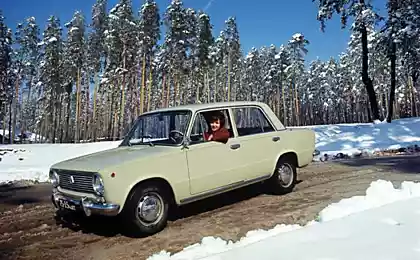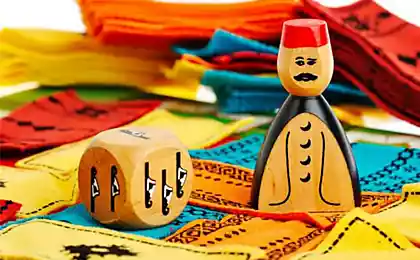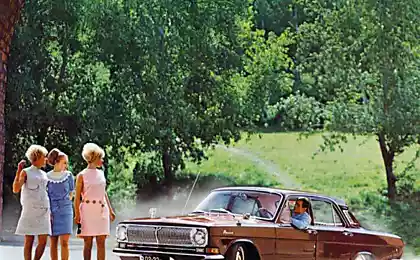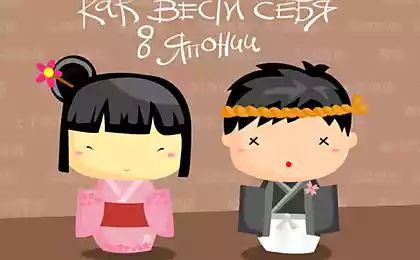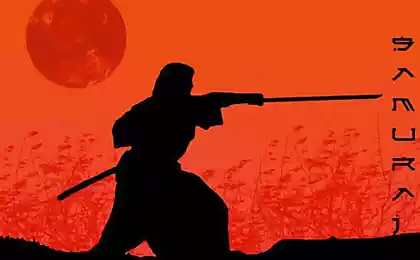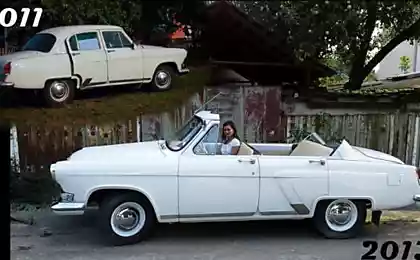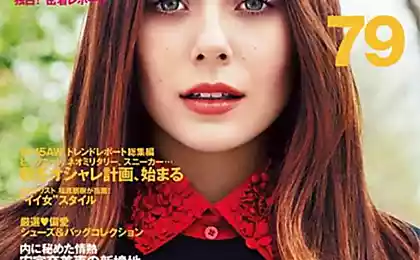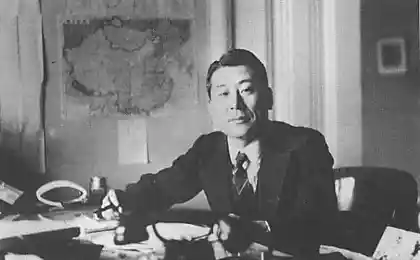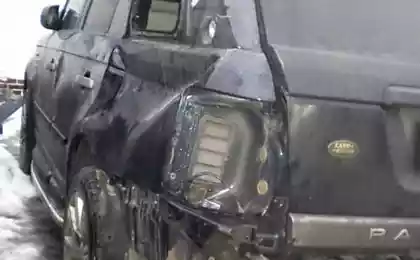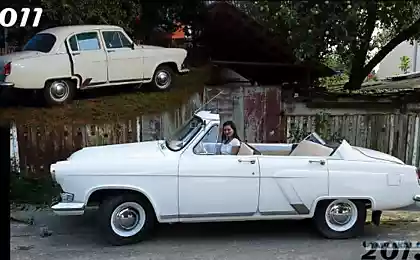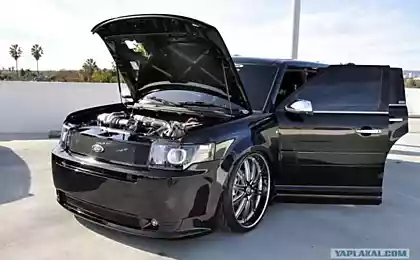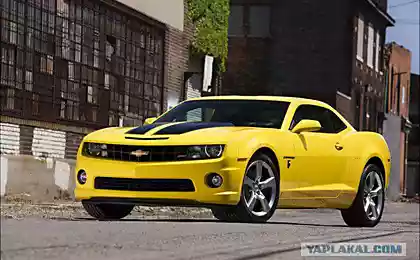1612
Madness and classic Japanese tuning.
These cars are rarely seen on the aftermarket exhibitions outside Japan. And on the "historic homeland," the prevalence of mad splashes, fins, defiantly sticking exhaust pipes and wheels facing polubokom, is declining. However, this area remains one of the most crazy and impractical types of car tuning. It - bōsōzoku. And today we make an excursion into the history of this area tyunig in Japan.
28 photos
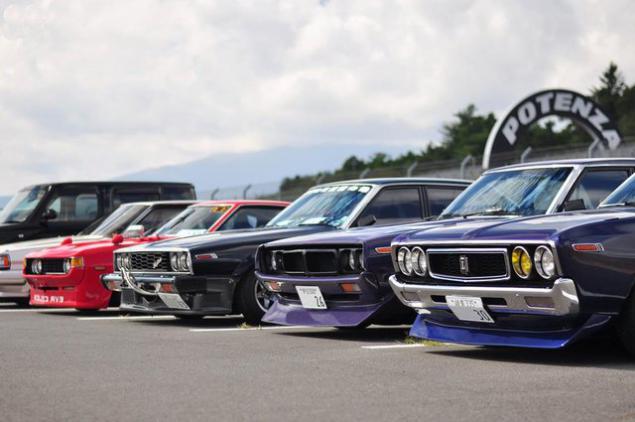
Bosozoku (Jap. Bo: to: Zoku, letters. 'Aggressive racing clan "), which appeared in the early 70-ies of the last century, has become a vibrant subculture of Japan. Direction originated among criminal gangs, reckless motorcyclists. Initially subculture called "kaminaridzoku" (from the Jap. "Clans thunder"). The Japanese have seen in these clans former kamikaze thrill seekers and gathering in the biker gang. It is believed that the name "bōsōzoku" comes from the merger of the words "race" (Jap. Bo: w) the definition of "family, clan, tribe" (Jap. Zoku), who used a Japanese TV stations during the reportage about the next street fight gangs motorcyclists. The value of the syllable "bo" from the first part of the name bōsōzoku is also the meaning of "violence" (by analogy with the Jap. Bo: rёkudan - "gangster" as often called the representatives of the Yakuza). There is another interpretation of the name bōsōzoku where "Bo» (bou) - aggressive, anti-social; «With» (sou) - Mobile, riding on motorcycles; "Zoku" - gang grouping. One way or another, but it definitely could not be more precise and came stuck in a new subculture of aggressive and non-law-abiding differing Japanese motorcyclists. Later part bōsōzoku moved from motorcycles to cars. And that's where tuning vehicles began to be shown most clearly by purchasing the features that today characterize the style bōsōzoku.
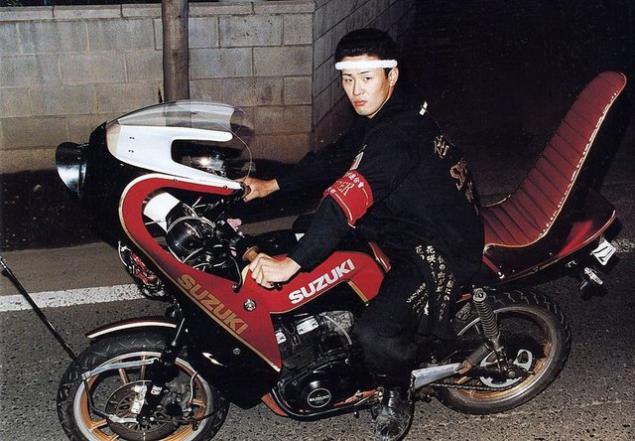
Cars bōsōzoku originally called Zokusha (Zoku) (gangster car). In the early '80s the movement finally formed into a special kind of tuning and will include 5 main stylistic directions. Modern bōsōzoku - a combination of the most basic types and styles. Although there are still examples of tuning to any one of the classic styles bōsōzoku. Therefore, the illustrations presented here is not always possible to see a "pure" example of a particular style.
Shakotan
Literally Shakotan (syakontan) translates as "minimum ground clearance". This term was coined after the manga comics «Shakotan Boogie», in which the main characters went to the extremely low vehicles. Shakotan - a kind of Japanese version of the low-riders: vehicles with lowered suspension. This feature often entails a number of other changes and improvements. Primarily, this wheel Hippari (hippies) (literal translation - "stretch"), as well as an increased camber Oni-kyan (they-NRC) ("devil's collapse") and dragging on the asphalt ring on the strap Tsurikawa (tsurikava). < br />
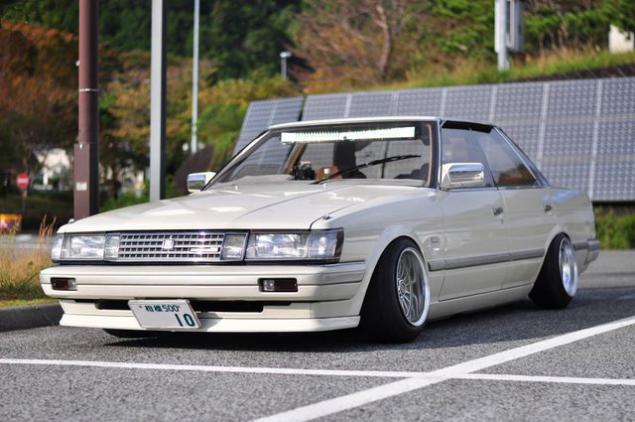
More

And
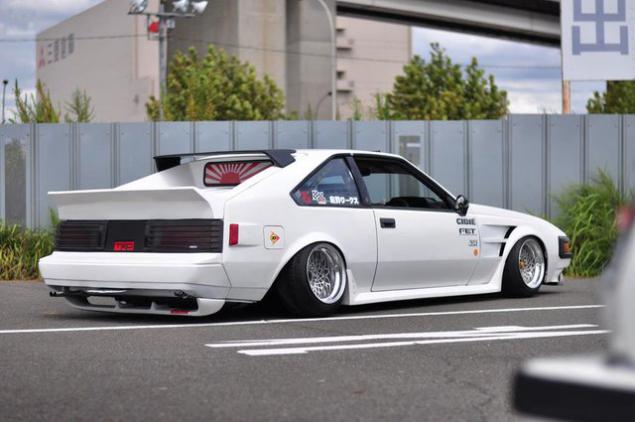
Yanky style
Name Yanky style speaks for itself. The style is based on bright colors of clothing "Aloha" (Hawaiian shirt). Emulate this style is called "Yankees." The most common color of these vehicles are used shades of orange (red), white and yellow colors. Style "Yankees" suggests understated landing vehicle. As an integral part of Yanky style is underlined rough lining wheel arches, behind which lurk wide wheels.
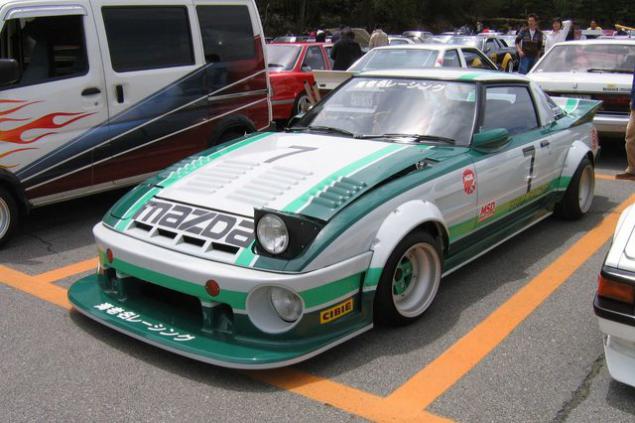
More
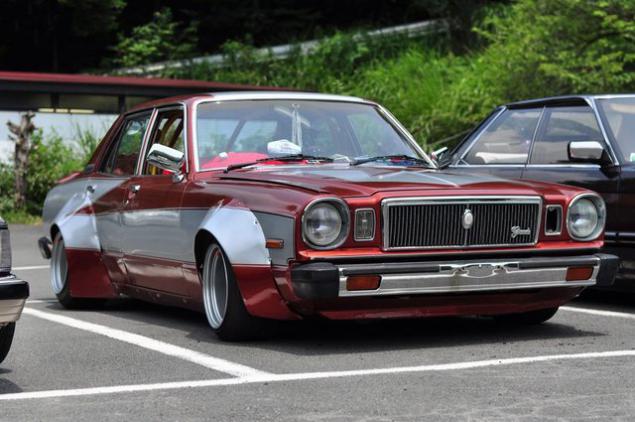
And
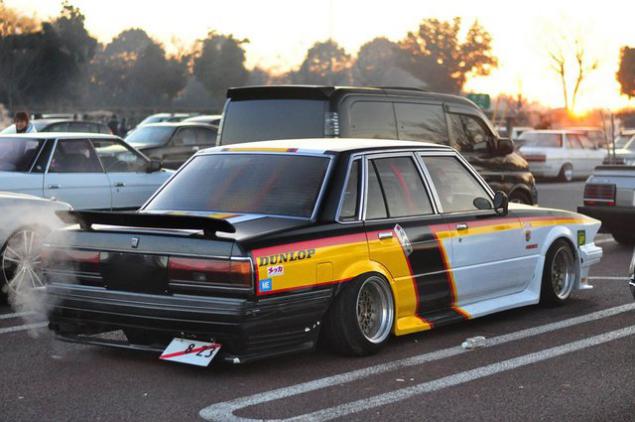
VIP style
VIP (the correct pronunciation is "VIP" - the Japanese Bippu) - the most expensive styles bōsōzoku by tuning the new (or relatively new) and expensive cars. There are two versions of the appearance of this style: among the yakuza among street racing Osaka. But in both cases, the reason - an attempt to reduce the attention of the police by the Japanese tuning luxury sedans, refined style Mercedes AMG, with mandatory understatement clearance and installation of wide wheels. This moment makes VIP style one of the most isolated areas bōsōzoku. Under this style best suited Toyota Celsior, Toyota Century, Toyota Aristo, Toyota Crown Majesta Crown and Toyota, and Nissan President, Nissan Cima, Nissan Gloria, Nissan Cedric and Nissan Fuga.
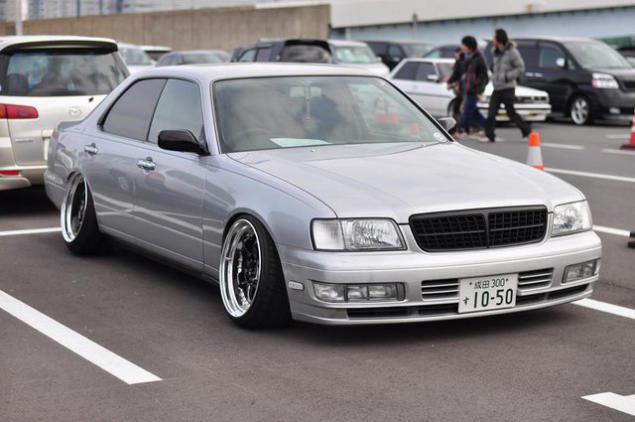
More
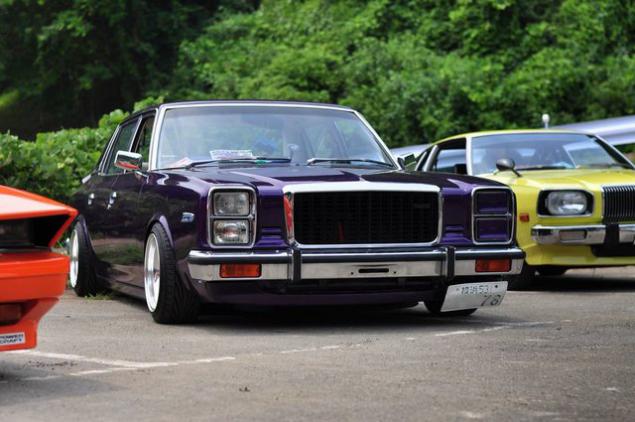
And

Kyusha style
Initially bōsōzoku were members of motorcycle gangs. But in recent years, especially after the tightening of traffic legislation which caused a reduction in the number of bōsōzoku and reduce the popularity of the entire subculture, a number of supporters bōsōzoku for the separation of different groups (primarily criminal) began to use the name kyushakai (Kyusyakay. Literally translated as Japanese old classic car, ie the "classic old Japanese car"). Cars kyushakai not have to be extremely low and bright: all the alterations made in the framework of the law. But make sure it is not new, and Japanese (Moldova) car.
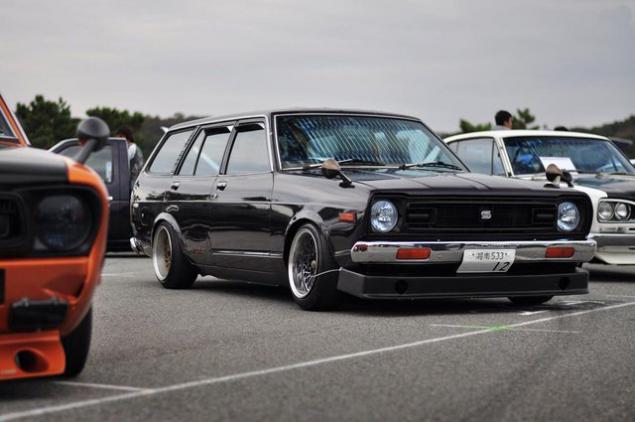
More
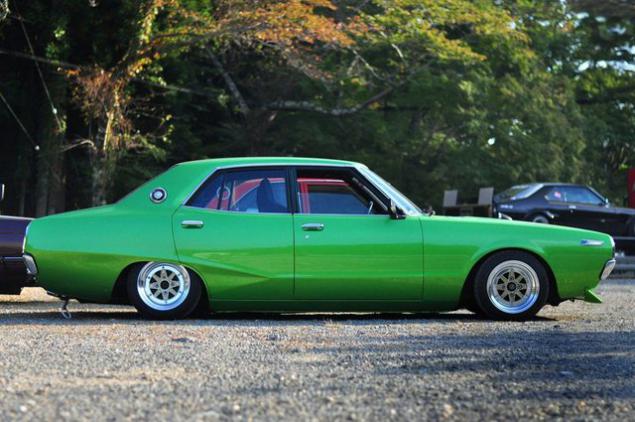
And
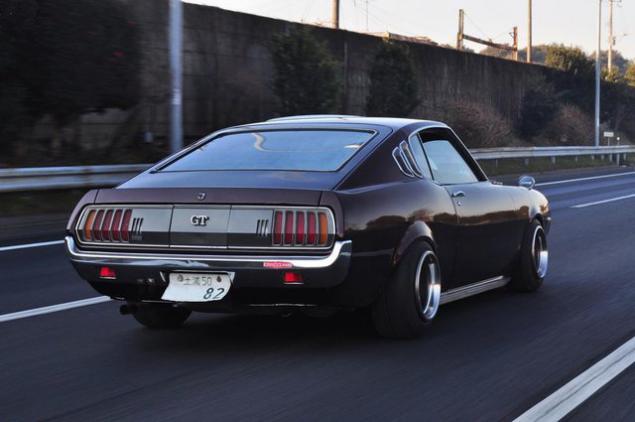
Grachan
The name is an abbreviation of Grand Championship - Japanese racing series 70-80s. That this term hides the craziest-looking cars with hypertrophied body kit (sometimes for an array of plastic, it is impossible to find the original model).
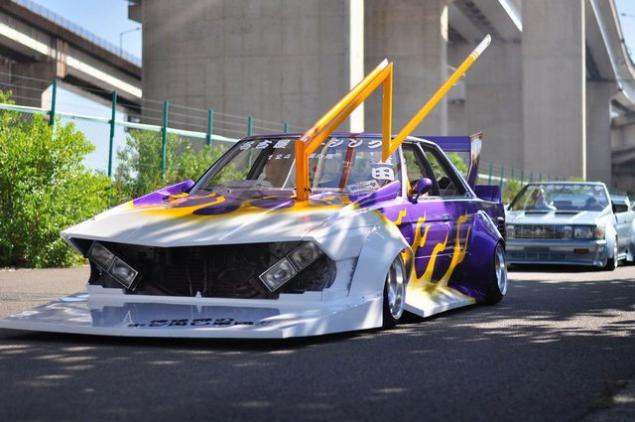
More
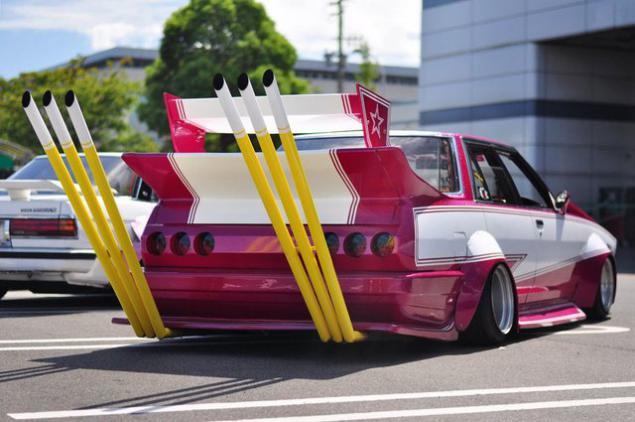
And
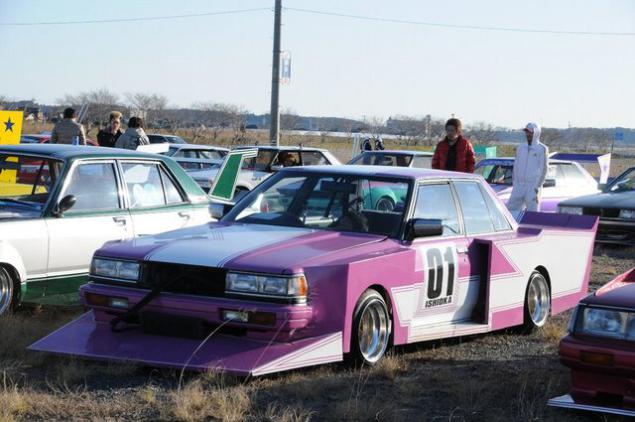
But apart from these basic styles there are still a number of less visible attributes bōsōzoku tuning, each of which adds a Japanese flavor and a bit of madness:
Nippari - bus, wearing a wide disk ("seethe" in Russian), significantly exceeding the allowable size for a particular tire size in width. The practical significance of such wheels is that the inwardly sloping lateral portion of the tire breaks inside the wheelhouse, allowing reduction of landing (clearance) of a vehicle, sometimes up to the outer edge of the disk.
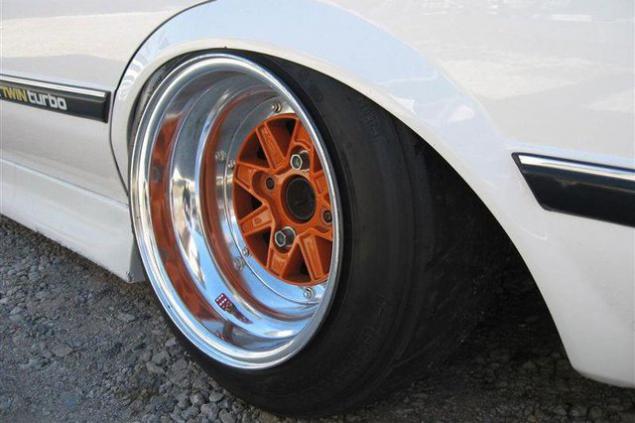
Another use of such tires found Japanese drifters who saw in the stretched tires increased stiffness of the wheel. However, at the end of long and numerous disputes, this aspect remains unproven, and today the tire hippies are largely attribute the reduced clearance and a special appearance as a whole.
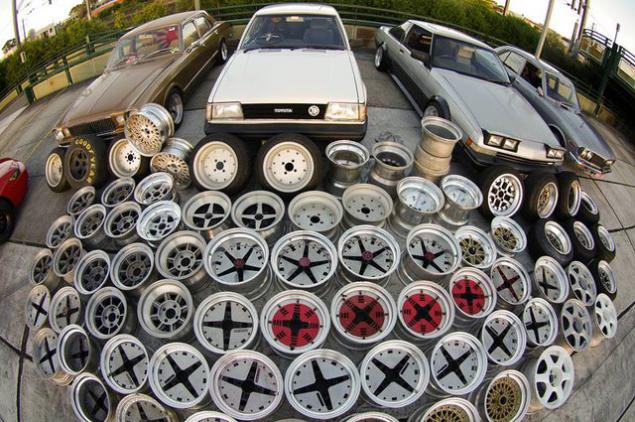
Oni-kyan - literally translated from Japanese means NRC-they "collapse of the devil." This attribute applies to drift carts and cars "highway-racers", and as the primary attribute of VIP-style. Aerobatics is considered to be a selection of CDs, in which the upper outer edge of the disk is almost the same as the edge of the wheel arches. Camber can exceed 10 or even 15 degrees. Used spiral, and if funds allow, the air suspension, and on machines with rear suspension Semi - Special breakup controls to "ruin" the wheel at an angle of 8 degrees.
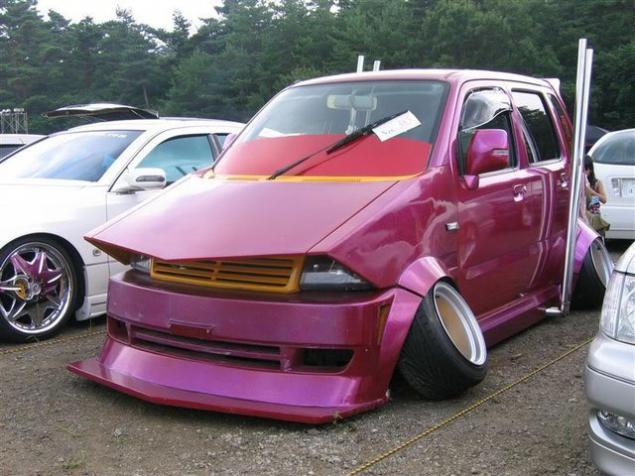
Tsurikawa - modest but significant attribute of an undervalued car. Initially tsurikava - ring on the strap, shot from the interior of public transport (now the ring is perhaps the most common accessory in Japanese stores tuning). The ring is placed under the rear bumper of the car so that it dragged (scraper) on the asphalt showing understated clearance vehicle. Sometimes it hung in the cabin.
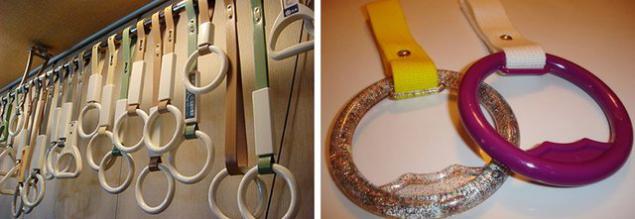
Shark nose - change the front of the vehicle for a more aggressive look. His name was a similarity with the shark nose. Usually it is done by increasing the front wings and bonnet, extending the front of the machine 20-30 cm., And also extends the lower "lip" of the bumper, which can grow to tens of centimeters. Special chic is, if this "lip" will lie under the hood learned from the oil cooler.
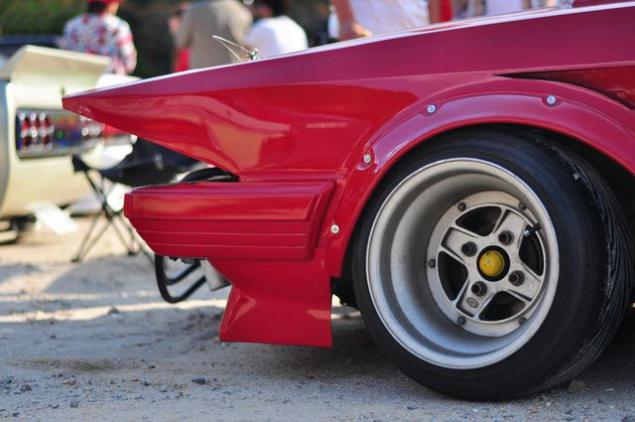
Bad Boy - a special arrangement of car headlights at an angle (to the center bottom). Used for giving the "bad" view and is one of the legacies of the old reputation of the criminal gangs bōsōzoku. Often used as the "Parties" optics (optics if the original can not change the situation - for example, in the round headlights), but it is believed that it was home headlights give a more correct "bad" opinion.
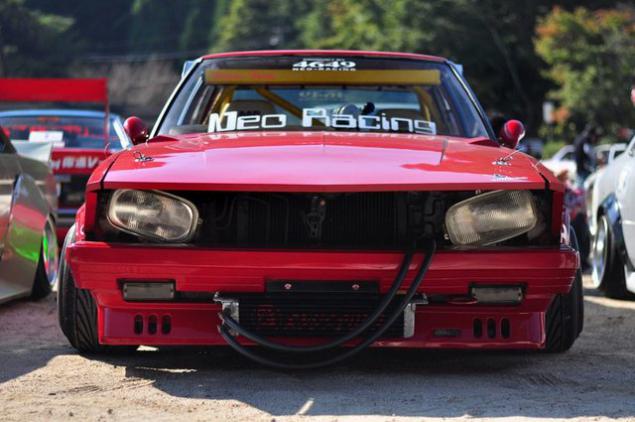
Takeyari (takeyari) - one of the most striking features of tuning bōsōzoku. Takeyari - this is a huge and long exhaust pipes of all shapes and sizes. The basic principle - the higher the pipe sticking out, the steeper. From their findings and how - does not matter. When these completions are usually deprived of exhaust catalysts, resonators and mufflers. The result - loud and sharp sound, warning of the approach of others bōsōzoku. Most often it takeyari found on cars in the style of Grachan.

External oil cooler - one is almost mandatory attribute bōsōzoku. Practicality in this decision a bit, since the risk of damage to the radiator much higher efficiency. The main thing here - the style. Obligatory flexible pipes coming to the radiator or through a grille or through niche to the left (not right!) Lights.
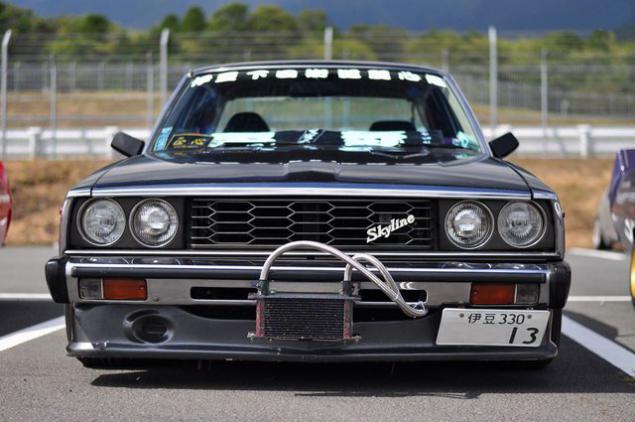
There are other much less significant attributes: protective lining on the lights (usually on the left, often - with the names of tuning firms or "gang" / community to which belongs to the owner of the vehicle), an additional spoiler-wing under the rear bumper, increased grip shift lever (or the selector lever), and all sorts of other bright "nishtyaki" bordering the children's toy. All this makes the cars bōsōzoku themselves look like toys, transformers, etc. of children's cartoons or comics. However, the Japanese in this respect his view: the more the machine such absurdities or kitsch - the steeper it is in terms of style bōsōzoku.
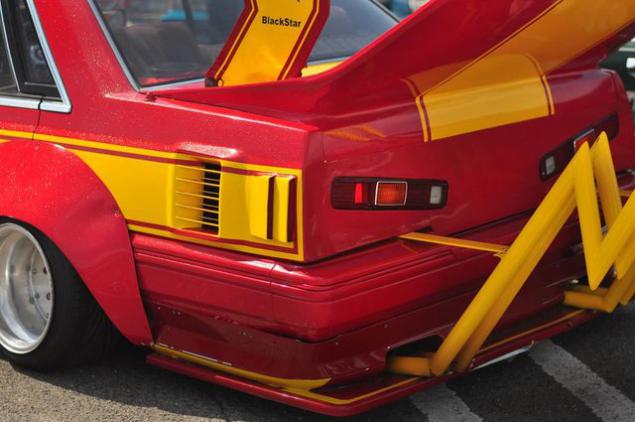
Often tuning style bōsōzoku deprives a car whatsoever practicality. In particular, the hypertrophic spoilers, fins or tail pipes made available not only problematic in the trunk, but, at times, and under the hood. A wheel arch extensions to cover the back door sedans, flatly denying the possibilities open.
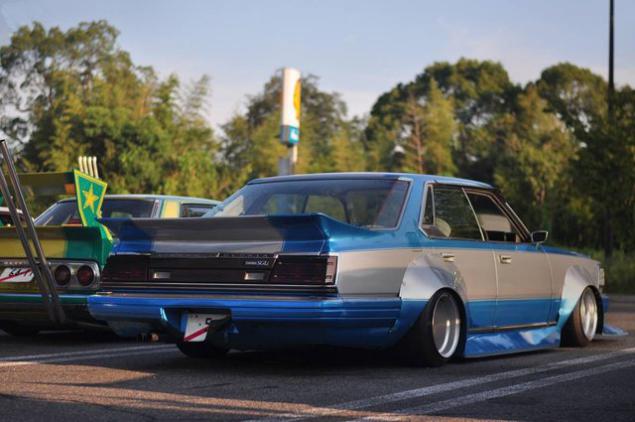
Does the Russian community bōsōzoku? Most likely, in the true sense of this definition, no - too different cultural conditions between us and the Japanese (here and demeanor, clothing, symbols ...). Perhaps that is why such tunings and we have not found widespread (though entertainment and produced effect "bōsōzoku" is always a safe bet). In Russia, as a rule, only to indulge in understatement cars. Basic "experimental" - a model of the Volga car. Why them? There are several reasons, but the main - the popularity and higher, compared with other brands, the liquidity of a converted car resale. And, of course, the availability of this kind of "tuning": corny crop spring on the Lada cost inexpensive. And do not feel sorry in case of failure.
Posted in [mergetime] 1386744352 [/ mergetime]
Like all, thank you guys that do not break. Happy viewing.
Taken from www.drom.ru
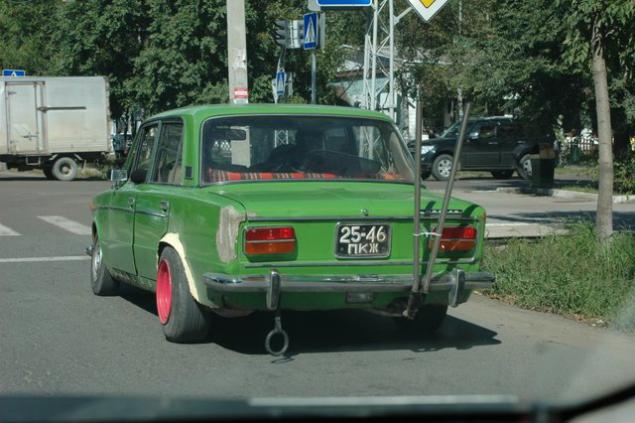
Source:
28 photos

Bosozoku (Jap. Bo: to: Zoku, letters. 'Aggressive racing clan "), which appeared in the early 70-ies of the last century, has become a vibrant subculture of Japan. Direction originated among criminal gangs, reckless motorcyclists. Initially subculture called "kaminaridzoku" (from the Jap. "Clans thunder"). The Japanese have seen in these clans former kamikaze thrill seekers and gathering in the biker gang. It is believed that the name "bōsōzoku" comes from the merger of the words "race" (Jap. Bo: w) the definition of "family, clan, tribe" (Jap. Zoku), who used a Japanese TV stations during the reportage about the next street fight gangs motorcyclists. The value of the syllable "bo" from the first part of the name bōsōzoku is also the meaning of "violence" (by analogy with the Jap. Bo: rёkudan - "gangster" as often called the representatives of the Yakuza). There is another interpretation of the name bōsōzoku where "Bo» (bou) - aggressive, anti-social; «With» (sou) - Mobile, riding on motorcycles; "Zoku" - gang grouping. One way or another, but it definitely could not be more precise and came stuck in a new subculture of aggressive and non-law-abiding differing Japanese motorcyclists. Later part bōsōzoku moved from motorcycles to cars. And that's where tuning vehicles began to be shown most clearly by purchasing the features that today characterize the style bōsōzoku.

Cars bōsōzoku originally called Zokusha (Zoku) (gangster car). In the early '80s the movement finally formed into a special kind of tuning and will include 5 main stylistic directions. Modern bōsōzoku - a combination of the most basic types and styles. Although there are still examples of tuning to any one of the classic styles bōsōzoku. Therefore, the illustrations presented here is not always possible to see a "pure" example of a particular style.
Shakotan
Literally Shakotan (syakontan) translates as "minimum ground clearance". This term was coined after the manga comics «Shakotan Boogie», in which the main characters went to the extremely low vehicles. Shakotan - a kind of Japanese version of the low-riders: vehicles with lowered suspension. This feature often entails a number of other changes and improvements. Primarily, this wheel Hippari (hippies) (literal translation - "stretch"), as well as an increased camber Oni-kyan (they-NRC) ("devil's collapse") and dragging on the asphalt ring on the strap Tsurikawa (tsurikava). < br />

More

And

Yanky style
Name Yanky style speaks for itself. The style is based on bright colors of clothing "Aloha" (Hawaiian shirt). Emulate this style is called "Yankees." The most common color of these vehicles are used shades of orange (red), white and yellow colors. Style "Yankees" suggests understated landing vehicle. As an integral part of Yanky style is underlined rough lining wheel arches, behind which lurk wide wheels.

More

And

VIP style
VIP (the correct pronunciation is "VIP" - the Japanese Bippu) - the most expensive styles bōsōzoku by tuning the new (or relatively new) and expensive cars. There are two versions of the appearance of this style: among the yakuza among street racing Osaka. But in both cases, the reason - an attempt to reduce the attention of the police by the Japanese tuning luxury sedans, refined style Mercedes AMG, with mandatory understatement clearance and installation of wide wheels. This moment makes VIP style one of the most isolated areas bōsōzoku. Under this style best suited Toyota Celsior, Toyota Century, Toyota Aristo, Toyota Crown Majesta Crown and Toyota, and Nissan President, Nissan Cima, Nissan Gloria, Nissan Cedric and Nissan Fuga.

More

And

Kyusha style
Initially bōsōzoku were members of motorcycle gangs. But in recent years, especially after the tightening of traffic legislation which caused a reduction in the number of bōsōzoku and reduce the popularity of the entire subculture, a number of supporters bōsōzoku for the separation of different groups (primarily criminal) began to use the name kyushakai (Kyusyakay. Literally translated as Japanese old classic car, ie the "classic old Japanese car"). Cars kyushakai not have to be extremely low and bright: all the alterations made in the framework of the law. But make sure it is not new, and Japanese (Moldova) car.

More

And

Grachan
The name is an abbreviation of Grand Championship - Japanese racing series 70-80s. That this term hides the craziest-looking cars with hypertrophied body kit (sometimes for an array of plastic, it is impossible to find the original model).

More

And

But apart from these basic styles there are still a number of less visible attributes bōsōzoku tuning, each of which adds a Japanese flavor and a bit of madness:
Nippari - bus, wearing a wide disk ("seethe" in Russian), significantly exceeding the allowable size for a particular tire size in width. The practical significance of such wheels is that the inwardly sloping lateral portion of the tire breaks inside the wheelhouse, allowing reduction of landing (clearance) of a vehicle, sometimes up to the outer edge of the disk.

Another use of such tires found Japanese drifters who saw in the stretched tires increased stiffness of the wheel. However, at the end of long and numerous disputes, this aspect remains unproven, and today the tire hippies are largely attribute the reduced clearance and a special appearance as a whole.

Oni-kyan - literally translated from Japanese means NRC-they "collapse of the devil." This attribute applies to drift carts and cars "highway-racers", and as the primary attribute of VIP-style. Aerobatics is considered to be a selection of CDs, in which the upper outer edge of the disk is almost the same as the edge of the wheel arches. Camber can exceed 10 or even 15 degrees. Used spiral, and if funds allow, the air suspension, and on machines with rear suspension Semi - Special breakup controls to "ruin" the wheel at an angle of 8 degrees.

Tsurikawa - modest but significant attribute of an undervalued car. Initially tsurikava - ring on the strap, shot from the interior of public transport (now the ring is perhaps the most common accessory in Japanese stores tuning). The ring is placed under the rear bumper of the car so that it dragged (scraper) on the asphalt showing understated clearance vehicle. Sometimes it hung in the cabin.

Shark nose - change the front of the vehicle for a more aggressive look. His name was a similarity with the shark nose. Usually it is done by increasing the front wings and bonnet, extending the front of the machine 20-30 cm., And also extends the lower "lip" of the bumper, which can grow to tens of centimeters. Special chic is, if this "lip" will lie under the hood learned from the oil cooler.

Bad Boy - a special arrangement of car headlights at an angle (to the center bottom). Used for giving the "bad" view and is one of the legacies of the old reputation of the criminal gangs bōsōzoku. Often used as the "Parties" optics (optics if the original can not change the situation - for example, in the round headlights), but it is believed that it was home headlights give a more correct "bad" opinion.

Takeyari (takeyari) - one of the most striking features of tuning bōsōzoku. Takeyari - this is a huge and long exhaust pipes of all shapes and sizes. The basic principle - the higher the pipe sticking out, the steeper. From their findings and how - does not matter. When these completions are usually deprived of exhaust catalysts, resonators and mufflers. The result - loud and sharp sound, warning of the approach of others bōsōzoku. Most often it takeyari found on cars in the style of Grachan.

External oil cooler - one is almost mandatory attribute bōsōzoku. Practicality in this decision a bit, since the risk of damage to the radiator much higher efficiency. The main thing here - the style. Obligatory flexible pipes coming to the radiator or through a grille or through niche to the left (not right!) Lights.

There are other much less significant attributes: protective lining on the lights (usually on the left, often - with the names of tuning firms or "gang" / community to which belongs to the owner of the vehicle), an additional spoiler-wing under the rear bumper, increased grip shift lever (or the selector lever), and all sorts of other bright "nishtyaki" bordering the children's toy. All this makes the cars bōsōzoku themselves look like toys, transformers, etc. of children's cartoons or comics. However, the Japanese in this respect his view: the more the machine such absurdities or kitsch - the steeper it is in terms of style bōsōzoku.

Often tuning style bōsōzoku deprives a car whatsoever practicality. In particular, the hypertrophic spoilers, fins or tail pipes made available not only problematic in the trunk, but, at times, and under the hood. A wheel arch extensions to cover the back door sedans, flatly denying the possibilities open.

Does the Russian community bōsōzoku? Most likely, in the true sense of this definition, no - too different cultural conditions between us and the Japanese (here and demeanor, clothing, symbols ...). Perhaps that is why such tunings and we have not found widespread (though entertainment and produced effect "bōsōzoku" is always a safe bet). In Russia, as a rule, only to indulge in understatement cars. Basic "experimental" - a model of the Volga car. Why them? There are several reasons, but the main - the popularity and higher, compared with other brands, the liquidity of a converted car resale. And, of course, the availability of this kind of "tuning": corny crop spring on the Lada cost inexpensive. And do not feel sorry in case of failure.
Posted in [mergetime] 1386744352 [/ mergetime]
Like all, thank you guys that do not break. Happy viewing.
Taken from www.drom.ru

Source:
